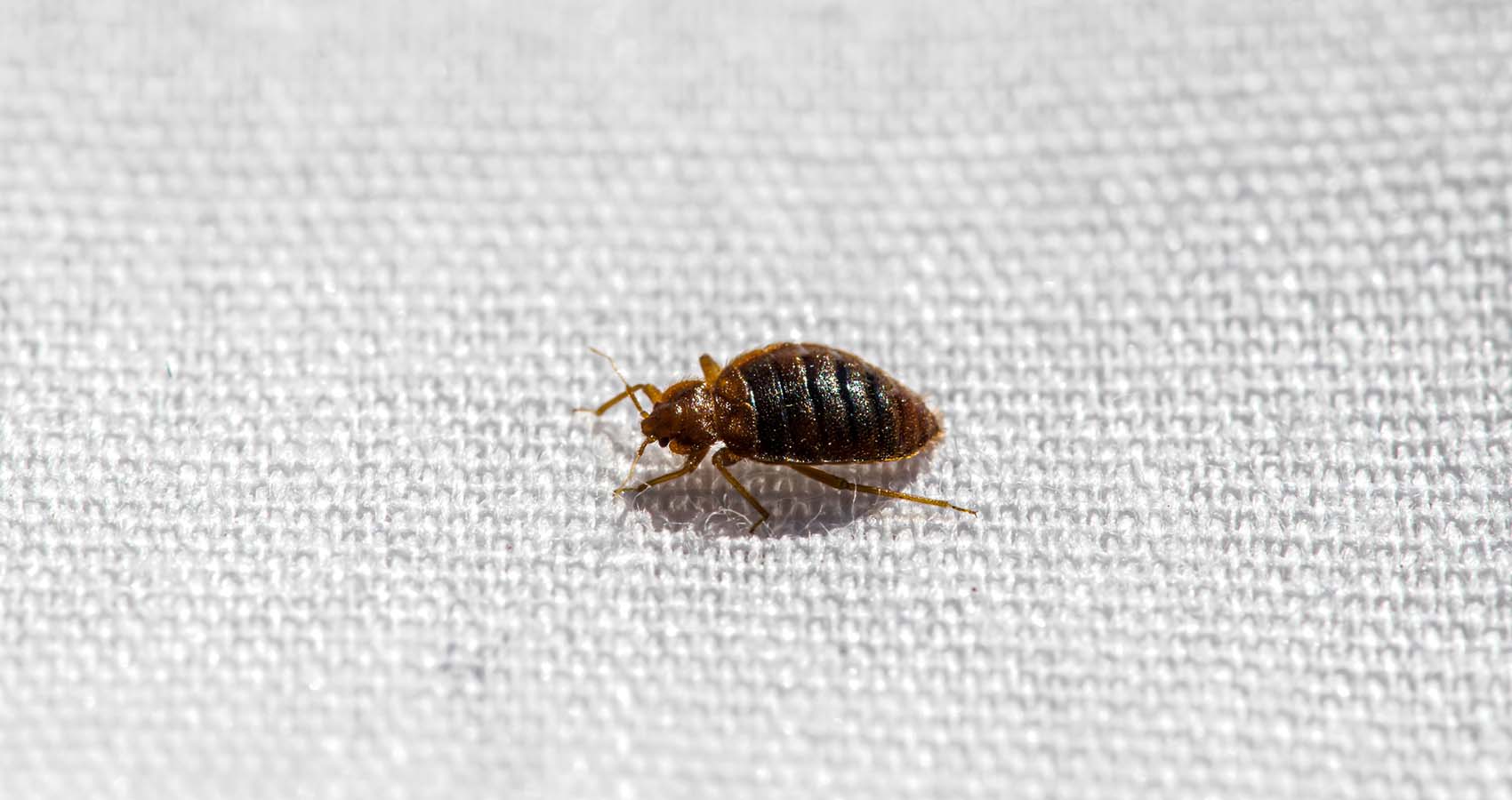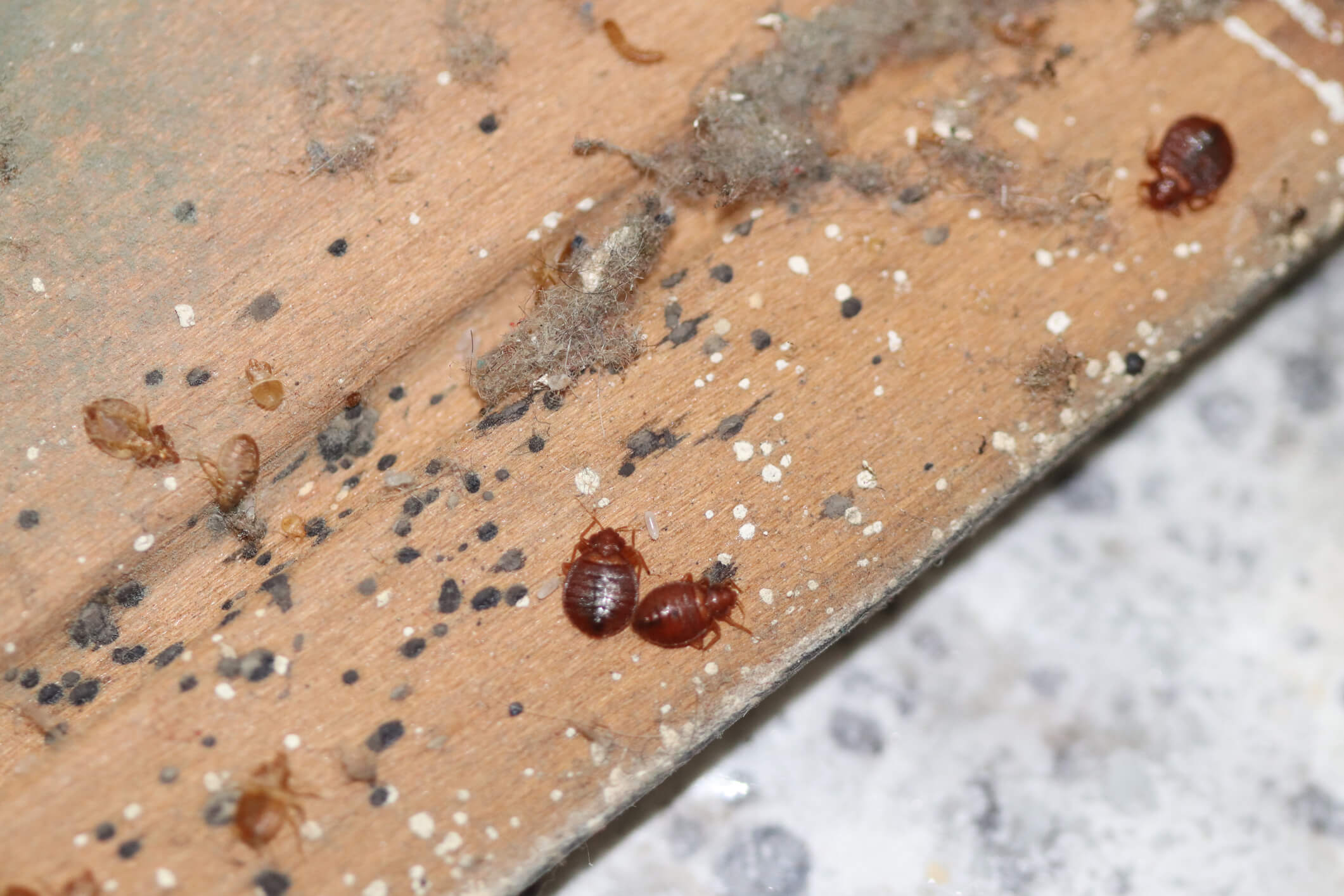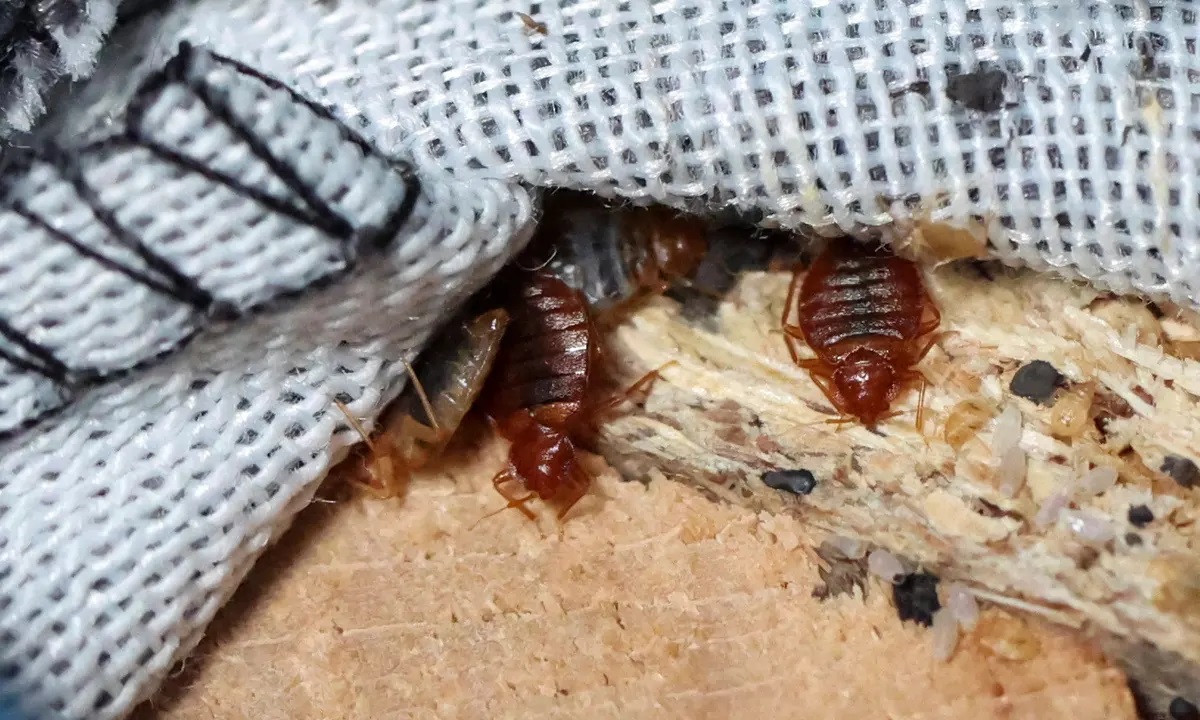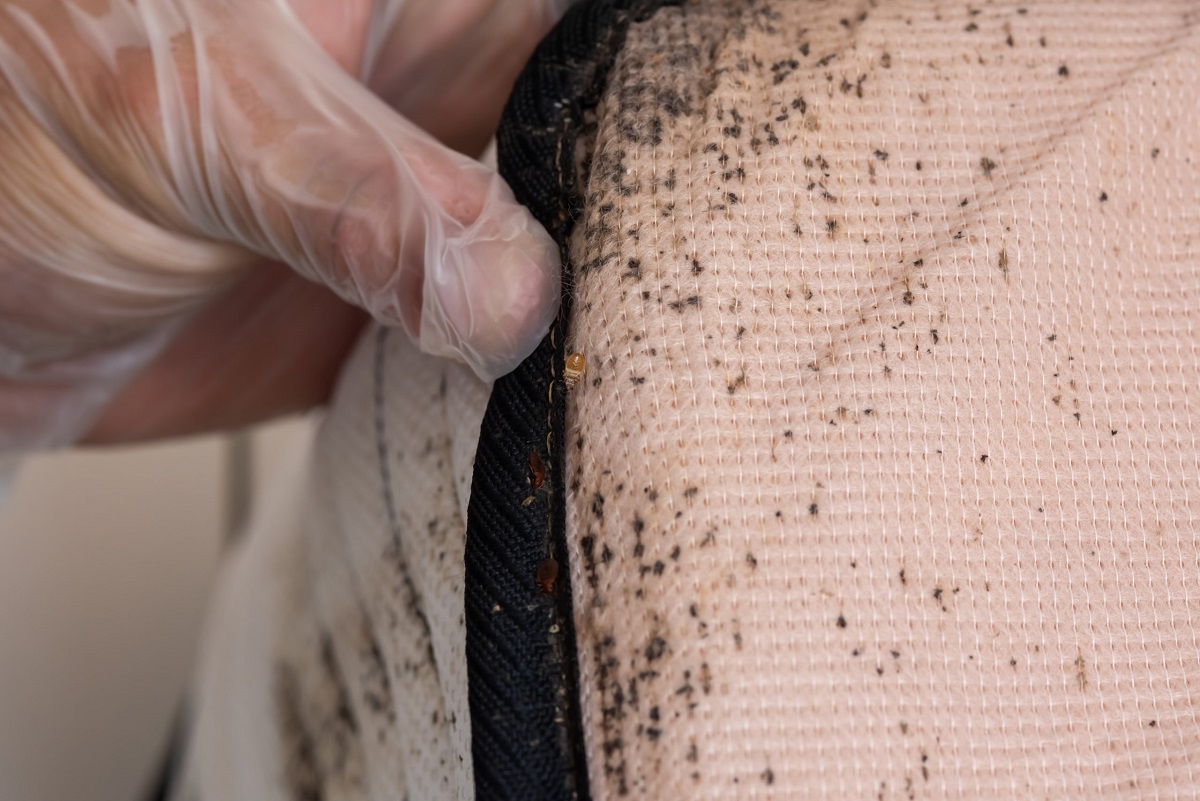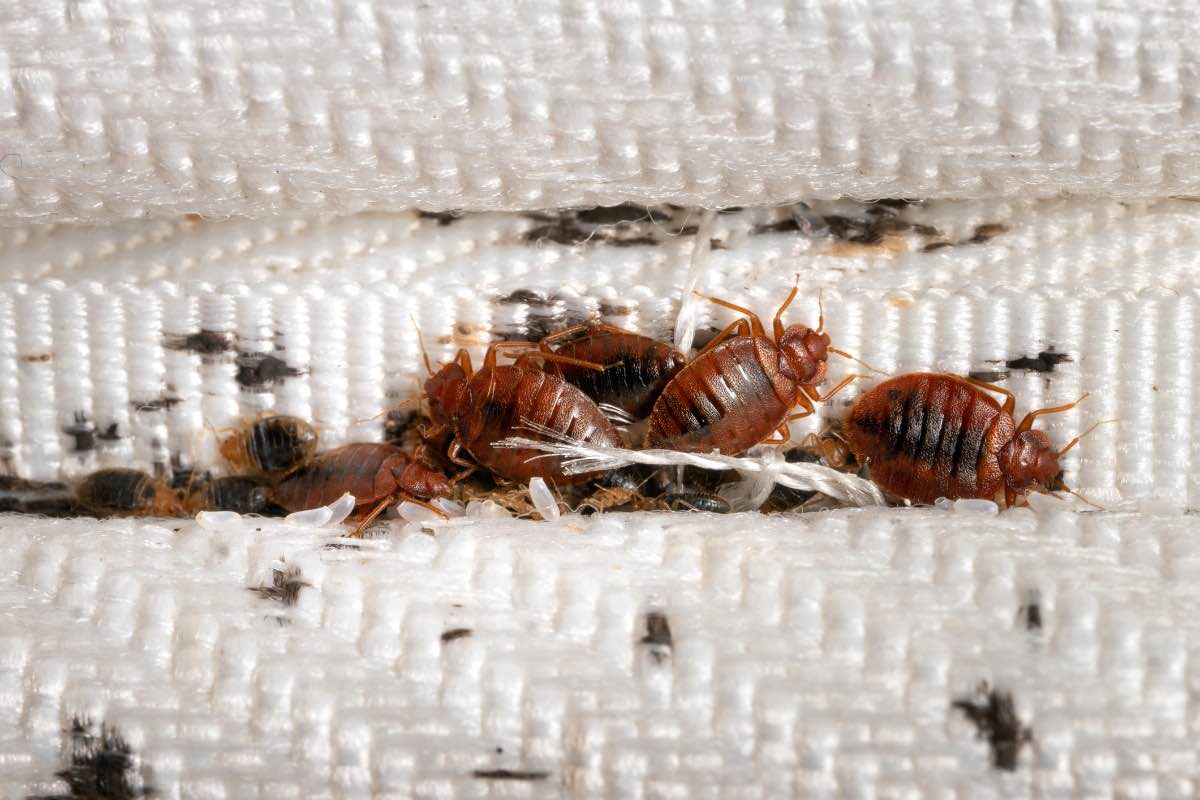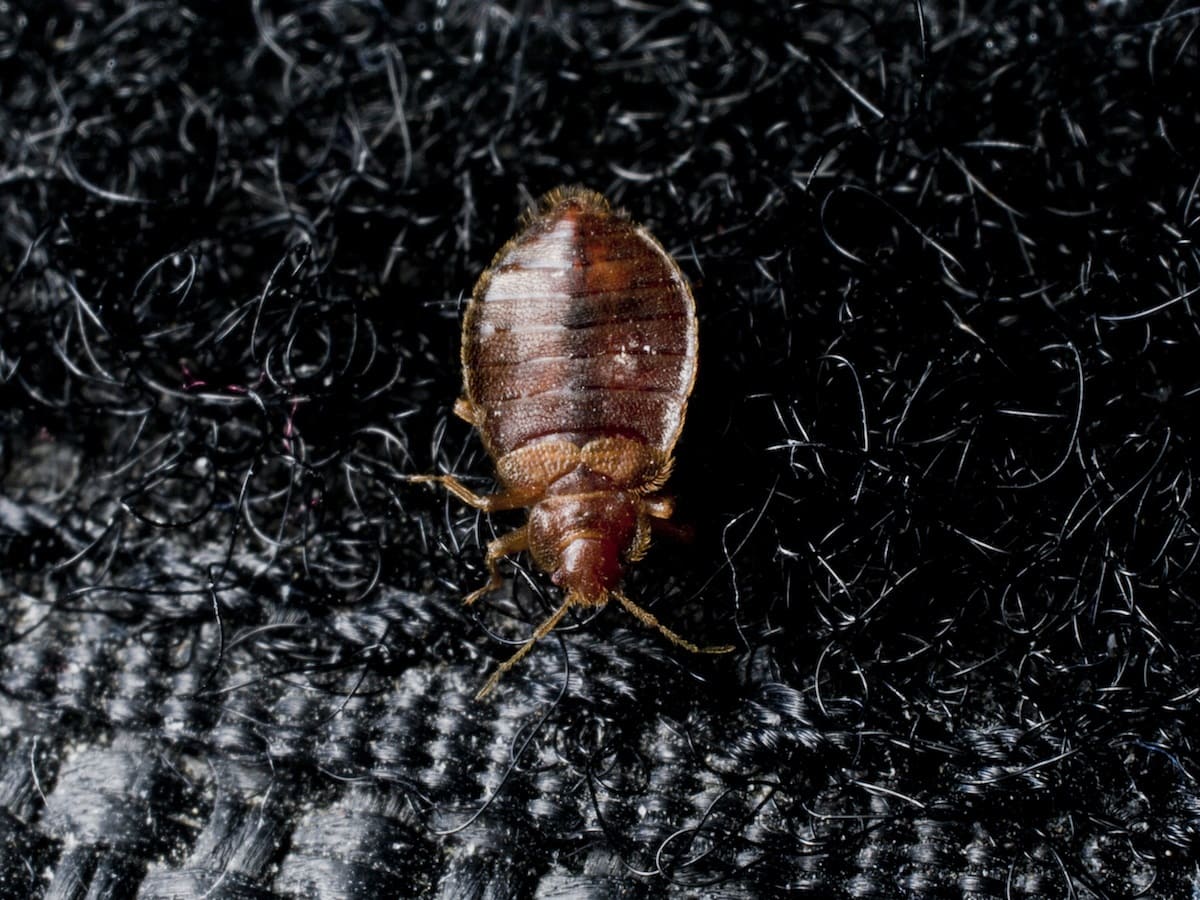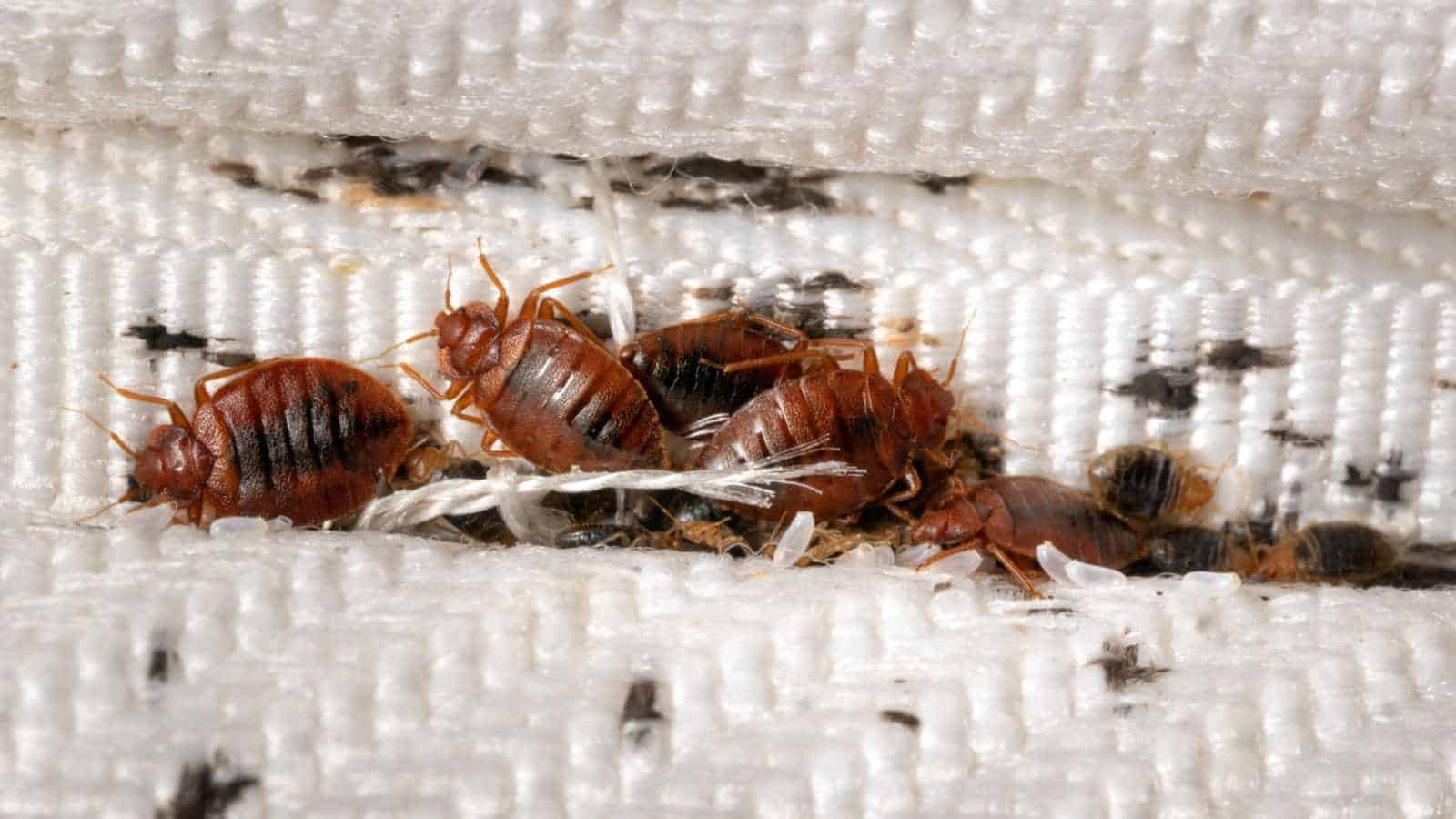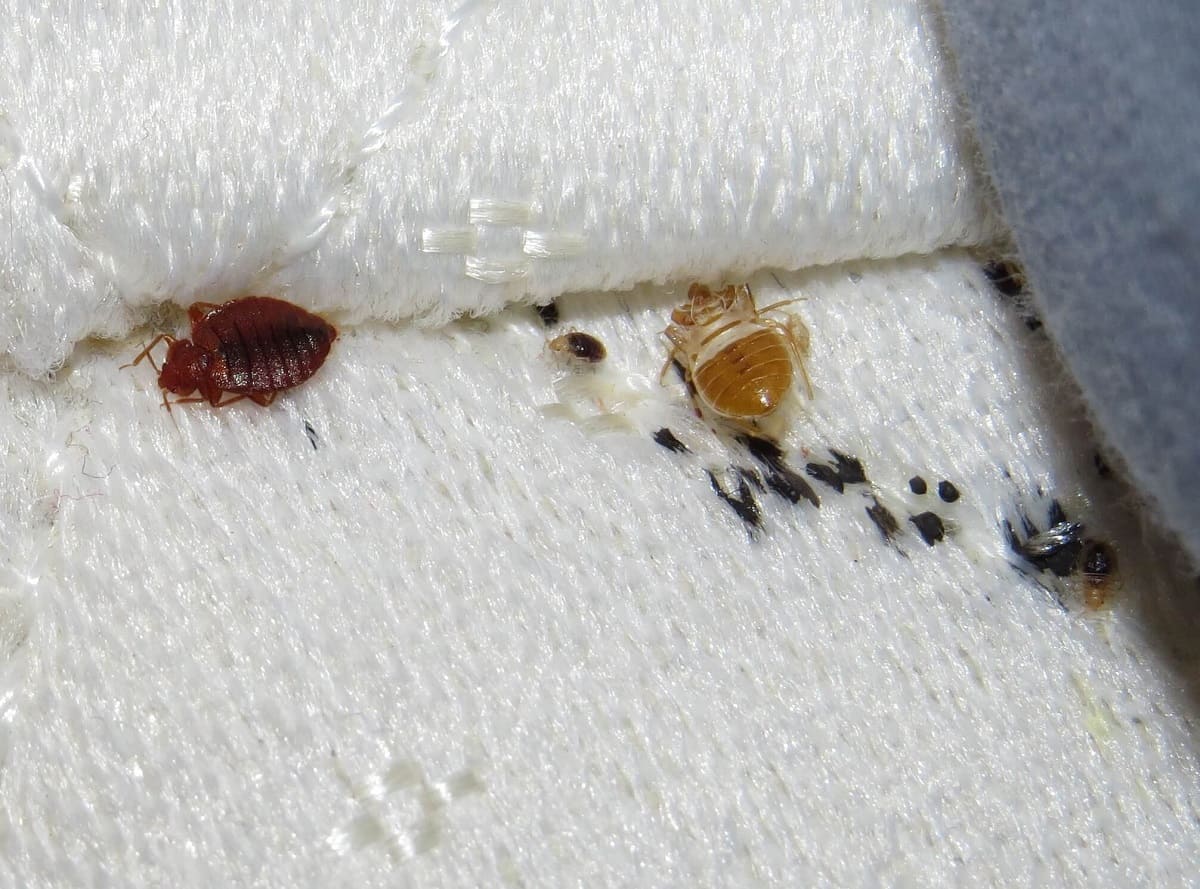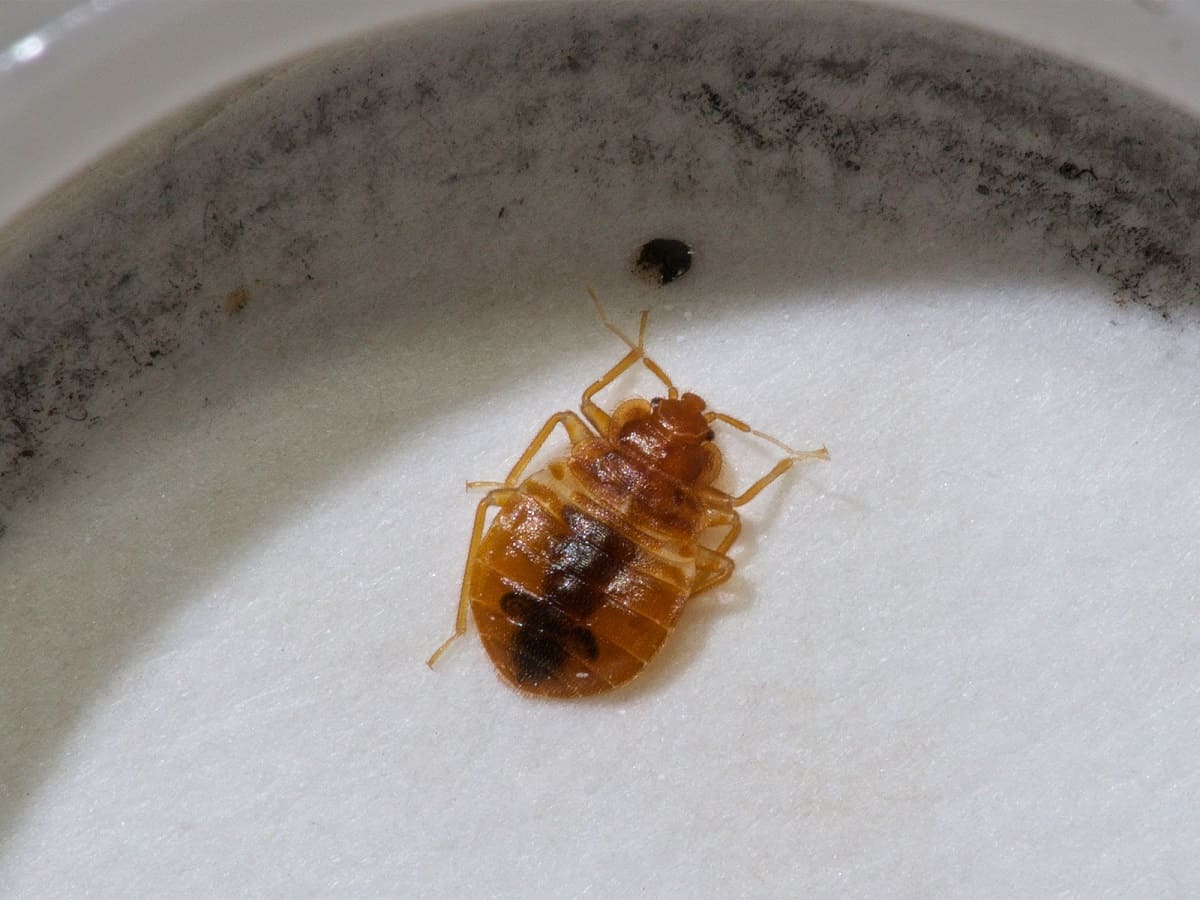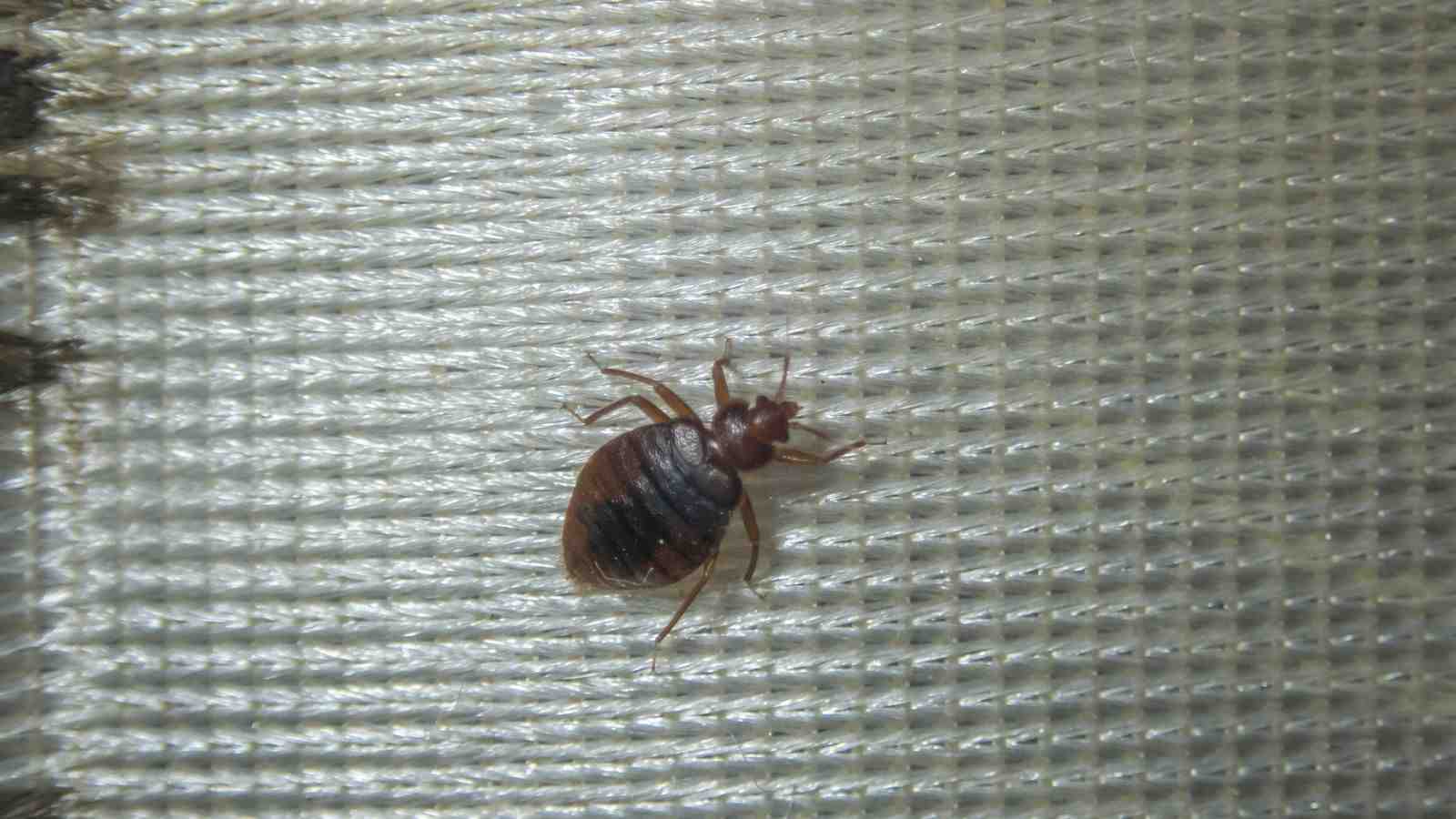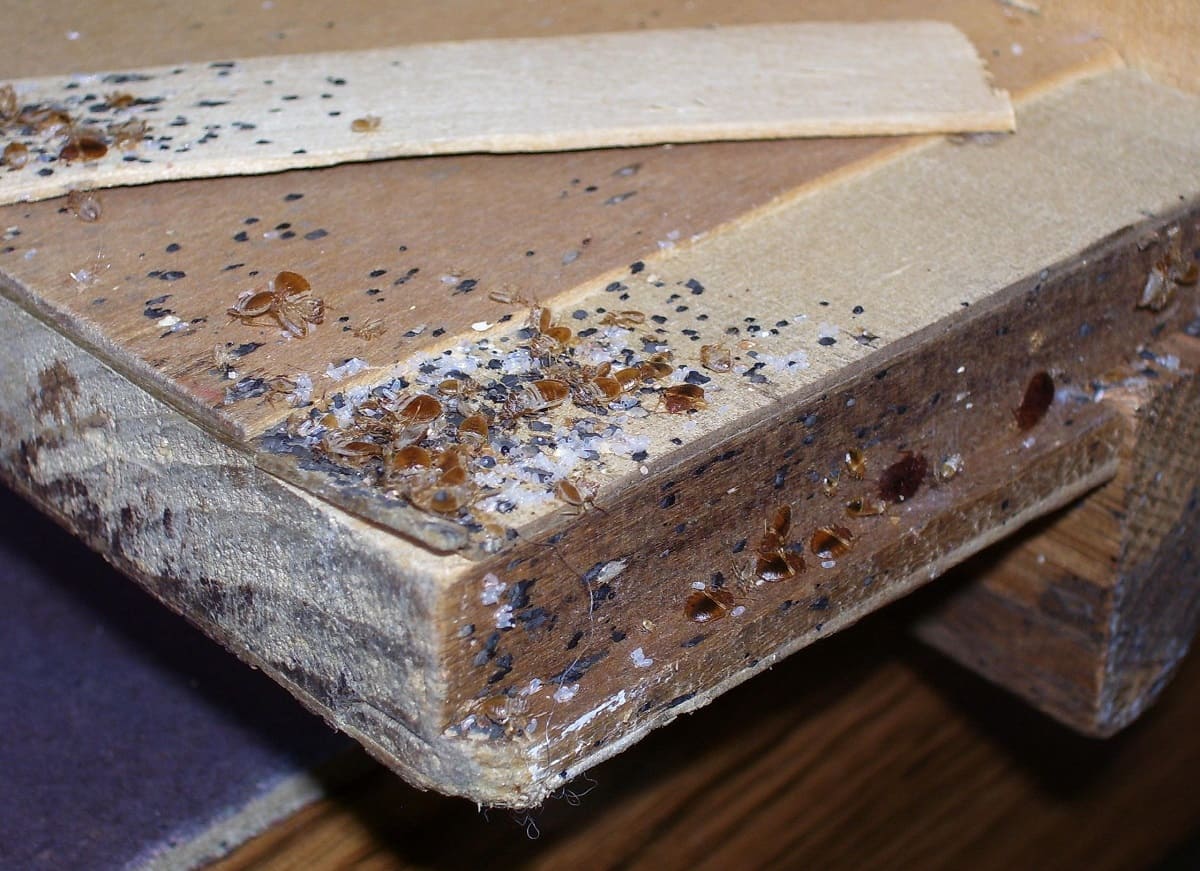Home>Furniture>Bedroom Furniture>How Fast Do Bed Bugs Spread
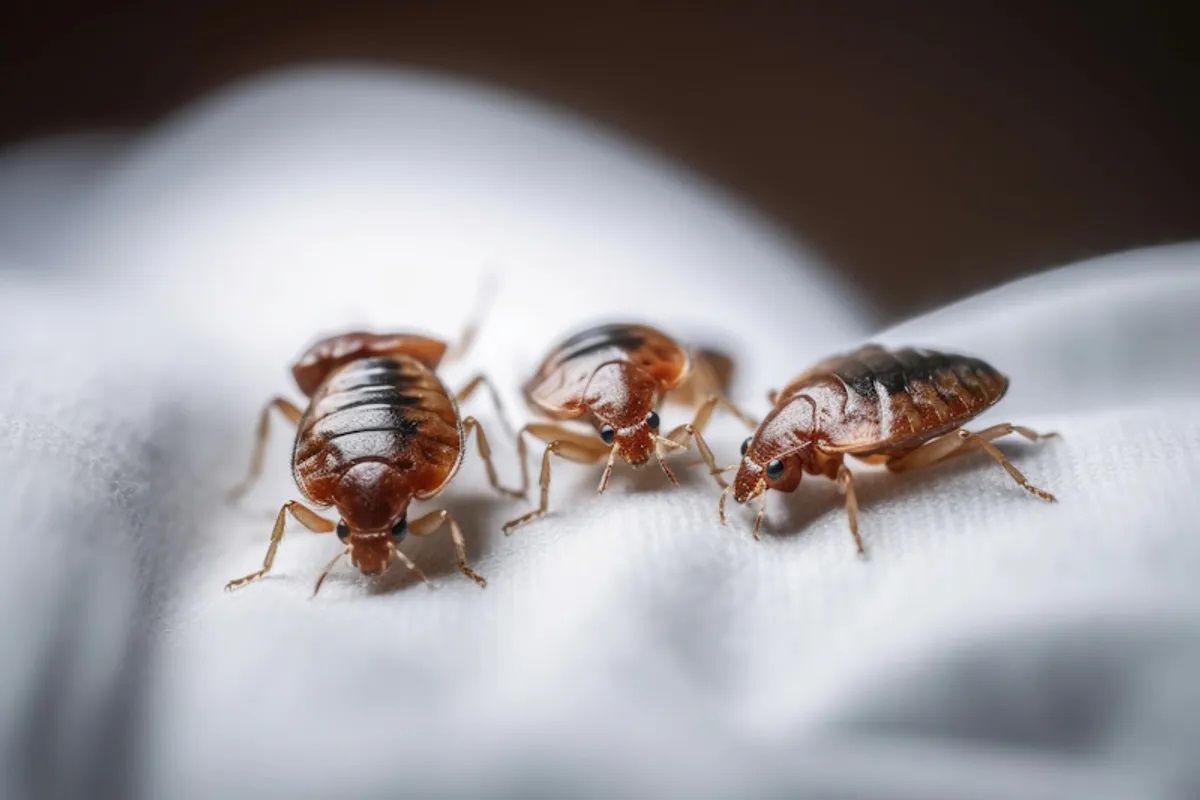

Bedroom Furniture
How Fast Do Bed Bugs Spread
Modified: October 28, 2024
Discover how quickly bed bugs can spread in your bedroom furniture. Protect your home from bed bug infestations with our expert tips and advice.
(Many of the links in this article redirect to a specific reviewed product. Your purchase of these products through affiliate links helps to generate commission for Storables.com, at no extra cost. Learn more)
Introduction
Welcome to the world of bedroom furniture where comfort, style, and relaxation come together. One of the key aspects of creating the perfect bedroom ambiance is ensuring that it is free from unwanted pests, including the dreaded bed bugs. These tiny creatures have the potential to turn a peaceful haven into a nightmare, causing sleepless nights and endless frustration. Understanding the speed at which bed bugs spread is crucial in order to effectively control and eradicate them.
Bed bugs, scientifically known as Cimex lectularius, are wingless insects that feed on the blood of humans and other warm-blooded animals. They are small, flat, and oval-shaped, making it easy for them to hide in crevices, cracks, and furniture, particularly beds and mattresses. These nocturnal pests are resilient and can survive for several months without feeding, making them difficult to eliminate once an infestation occurs.
The speed at which bed bugs spread can vary depending on several factors, including their reproductive capabilities, the methods of spread, and human factors. Understanding these factors is crucial in developing strategies to prevent and control bed bug infestations.
In this article, we will explore the various factors that affect the spread of bed bugs, their reproductive capabilities, the methods through which they spread, human factors contributing to their spread, and the signs of infestation. Additionally, we will provide valuable insights into effective prevention and control measures to help you ensure a peaceful and bed bug-free bedroom.
So, let’s dive into the fascinating world of bed bugs and unravel the mysteries of their spread, reproduction, and ultimately, their control.
Key Takeaways:
- Understanding the factors that contribute to the spread of bed bugs, including their rapid reproduction, hitchhiking abilities, and human behaviors, is crucial in implementing effective prevention and control measures to safeguard your home and well-being.
- Early detection, proactive inspection, and collaboration with pest control professionals are essential in combating bed bug infestations. By staying vigilant and taking swift action, you can create a peaceful and bed bug-free environment for a restful night’s sleep.
Read more: How Fast Do Bed Bugs Reproduce
Understanding Bed Bugs
Before we delve into the speed at which bed bugs spread, it’s important to have a basic understanding of these pests. Bed bugs are small insects that belong to the Cimicidae family and have been around for centuries. They feed exclusively on the blood of humans and animals, usually during the night when their victims are asleep.
Bed bugs are excellent hitchhikers and can easily travel from one location to another by attaching themselves to clothing, luggage, furniture, and other personal belongings. Contrary to popular belief, bed bugs are not a sign of poor hygiene or unclean living conditions. They can infest even the cleanest of homes, hotels, and properties.
Identifying bed bugs can be a bit challenging as they are incredibly small, ranging from 1 to 7 millimeters in length. They have flat, oval-shaped bodies, and their color can vary from light brown to reddish-brown, depending on when they last fed. After feeding, their bodies become swollen and darker in color.
Bed bugs are primarily nocturnal and hide in various cracks and crevices during the day. They are attracted to warmth and carbon dioxide, which is why they are often found in and around beds, mattresses, and other sleeping areas. However, they can also infest areas such as upholstered furniture, curtains, baseboards, and even electrical outlets.
While bed bugs do not transmit diseases, their bites can cause irritation, itching, and in some cases, allergic reactions. The physical and psychological distress caused by these pesky pests can be overwhelming, which is why it is crucial to understand how quickly they can spread and take appropriate measures to prevent and control infestations.
Factors Affecting Bed Bug Spread
Several factors influence the speed at which bed bugs spread and infest new areas. Understanding these factors can help in implementing effective prevention and control measures. Here are the key factors affecting the spread of bed bugs:
- Travel and Movement: Bed bugs are exceptional hitchhikers and can easily travel from one place to another by latching onto luggage, clothing, and other personal belongings. They can be inadvertently brought into homes, hotels, and other locations by travelers. Additionally, the movement of infested furniture or second-hand items can contribute to the spread of these pests.
- High Population: The size of the bed bug population plays a significant role in their spread. A high number of bed bugs means more opportunities for reproduction, leading to a rapid increase in the infestation. If left unchecked, a small infestation can quickly escalate into a severe problem.
- Availability of Hiding Places: Bed bugs are skilled at finding hiding spots, particularly in cracks, crevices, and furniture. The availability of suitable hiding places in a location increases the chances of bed bug survival and reproduction, ultimately contributing to their spread.
- Resistance to Insecticides: Over time, bed bugs have developed resistance to certain insecticides, making it harder to eliminate them. This resistance allows them to survive and reproduce, leading to the further spread of infestations.
- Lack of Awareness and Education: Many people are unaware of how to identify bed bugs or the signs of an infestation. This lack of awareness can delay detection and proper treatment, allowing bed bugs to multiply and spread unnoticed.
It is essential to address these factors to minimize the risk of bed bug infestations and prevent their rapid spread. By focusing on education, implementing proactive measures, and seeking professional help when needed, we can effectively control the spread of these pests and maintain a bed bug-free environment.
Speed of Reproduction
When it comes to bed bugs, their ability to reproduce quickly is one of the main reasons for their rapid spread and infestation. Understanding the speed of their reproduction is crucial in combating these pests effectively.
Female bed bugs can lay between one to five eggs per day, with an average of 200 to 500 eggs in their lifetime. The eggs are tiny, about 1mm in size, and are often deposited in cracks, crevices, and other hiding spots near their food source. These eggs are resistant to many common insecticides, making them challenging to eradicate.
Under optimal conditions, which include a temperature of around 70-80°F (21-27°C) and access to a blood meal, bed bug eggs will hatch in about 6 to 10 days. The newly hatched bed bug nymphs are translucent and almost invisible to the naked eye. They go through several molts, shedding their exoskeleton to grow into adults.
From hatching to adulthood, bed bugs typically go through five nymphal stages, known as instars. Each nymphal stage requires a blood meal for growth and development. The duration of each nymphal stage largely depends on factors such as temperature, access to a host, and the availability of suitable hiding spots. On average, the entire nymphal development process takes about five weeks.
Once a bed bug reaches adulthood, it will continue to search for blood meals and reproduce, perpetuating the cycle and facilitating the spread of infestations. Adult bed bugs can live for several months to over a year, depending on conditions such as temperature and the availability of food.
The rapid rate of reproduction, coupled with the ability of bed bugs to survive without feeding for several months, makes them highly resilient and difficult to eliminate once an infestation occurs.
To effectively control bed bug infestations, it is crucial to disrupt their reproductive cycle and eliminate both the adult bed bugs and their eggs. Immediate action, including professional pest control intervention, is often necessary to prevent further spread and ensure complete eradication.
Methods of Bed Bug Spread
Bed bugs are adept at spreading through various methods, taking advantage of their small size, hitchhiking abilities, and hiding capabilities. Understanding the different methods through which these pests spread is essential in preventing their infestation and controlling their spread:
- Travelers and Luggage: One of the most common ways that bed bugs spread is through travelers. Bed bugs can easily hitch a ride on luggage, clothing, and personal belongings, infesting hotels, vacation rentals, and other accommodations. When the infested luggage returns home, it can introduce the bed bugs into a new environment.
- Second-Hand Furniture: Another common method of bed bug spread is through the purchase of second-hand furniture. Infested beds, couches, chairs, and other furniture can bring bed bugs into homes or other locations. It is crucial to inspect and treat second-hand furniture before bringing it indoors.
- Shared Spaces: Bed bugs can also spread easily in shared spaces such as dormitories, apartments, and multi-unit buildings. If one unit becomes infested, bed bugs can easily travel through walls, crawl spaces, and electrical wiring to infest neighboring units.
- Public Transportation: Bed bugs can be found on public transportation, including buses, airplanes, taxis, and trains. They can easily latch onto clothing or bags and spread to other passengers or locations.
- Visitors: Bed bugs can be brought into a home or establishment by visitors. If a visitor unknowingly carries bed bugs on their clothing or belongings, they can easily leave behind a few hitchhikers, leading to an infestation.
- Laundry Facilities: Shared laundry facilities, such as laundromats or communal laundry rooms in apartment buildings, can be hotspots for bed bug spread. Bed bugs can easily transfer from infested clothing or bedding to other items in the facility.
It’s important to note that bed bugs are not limited to infesting beds and mattresses. They can also hide in upholstered furniture, curtains, baseboards, electrical outlets, cracks, and crevices in walls and floors, making their spread even more challenging to control.
Preventing the spread of bed bugs involves vigilance, awareness, and proactive measures. Regular inspections, proper treatment of infested items, and maintaining cleanliness and hygiene in living spaces can greatly reduce the risk of bed bug infestations and minimize their spread.
Inspect and vacuum your luggage after traveling to prevent bringing bed bugs home. Wash and dry clothes on high heat to kill any potential bed bugs.
Human Factors Contributing to Bed Bug Spread
While bed bugs are excellent hitchhikers and can spread through various means, human behavior and actions play a significant role in their dispersal. Here are some common human factors contributing to the spread of bed bugs:
- Lack of Awareness: Many people are unaware of the signs of a bed bug infestation or how easily they can spread. This lack of awareness can result in delayed detection and treatment, allowing bed bugs to multiply and move to other areas.
- Insufficient Precautions: Failure to take necessary precautions can contribute to the spread of bed bugs. For example, not inspecting second-hand furniture before bringing it into a home or neglecting to check luggage and clothing after traveling can introduce bed bugs into a new environment.
- Inadequate Hygiene Practices: While bed bugs are not attracted to dirt or filth, clutter and poor hygiene can provide them with more hiding spots, making it easier for infestations to spread. Untidy living conditions can also make it harder to detect and treat the presence of bed bugs.
- Ineffective Treatment: Attempting to treat a bed bug infestation without professional assistance or using ineffective methods can lead to the spread of these pests. DIY treatments or using over-the-counter insecticides may not eliminate the entire infestation, allowing the remaining bed bugs to continue breeding and infest new areas.
- Delayed Reporting: Failure to report a bed bug infestation promptly can result in its spread to neighboring units or locations. It is crucial to inform landlords, hotel management, or property owners as soon as an infestation is identified to take immediate action and prevent further spread.
- Lack of Collaboration: Bed bug control is often more effective when multiple parties work together. If neighboring units, landlords, or property management fail to address infestations collectively, bed bugs can move freely between apartments or properties, leading to continuous spread.
It is important for individuals to be proactive and take necessary precautions to prevent the spread of bed bugs. Regular inspections, prompt reporting of infestations, proper treatment, and cooperation with others in shared spaces can significantly reduce the risk of bed bug spread and help in minimizing their impact.
By understanding and addressing these human factors, we can work towards creating environments that are less hospitable to bed bugs, ultimately reducing the chances of infestation and the need for extensive control measures.
Signs of Bed Bug Infestation
Knowing the signs of a bed bug infestation is crucial for early detection and effective treatment. Here are the common indicators that you may have a bed bug problem:
- Bite marks: Bed bug bites are often the first sign of an infestation. They appear as small, red, itchy welts on the skin, usually in a line or clustered pattern. However, it’s important to note that not everyone reacts to bed bug bites, so the absence of bites does not necessarily mean there is no infestation.
- Presence of live bed bugs: Spotting live bed bugs is a clear indication of an infestation. Adult bed bugs are about the size of an apple seed, with flat, oval-shaped bodies that are reddish-brown in color. They are most active during the night and usually hide in cracks, crevices, and other hiding spots during the day.
- Bed bug exoskeletons: As bed bugs go through the nymphal stages, they shed their exoskeletons or outer shells. Finding these exoskeletons, which appear as translucent, empty shell casings, is a sign that bed bugs are present and actively growing in your living space.
- Small bloodstains: After feeding, bed bugs often leave behind small bloodstains on sheets, mattresses, or furniture upholstery. These stains can appear as tiny spots or smears and indicate that bed bugs have been feeding in the area.
- Dark spots or fecal stains: Bed bugs produce dark, rusty-brown fecal stains as they digest blood. These stains may appear as small specks on bedding, mattress seams, or other infested areas. They can often be found in clusters or linear patterns.
- Musty odor: In severe infestations, a musty odor may be present. This odor is often likened to the scent of coriander or spoiled raspberries. If you notice an unusual smell in your bedroom or living space, it could be an indication of a significant bed bug infestation.
If you notice any of these signs or suspect a bed bug infestation, it is important to take immediate action. Contact a professional pest control service to conduct a thorough inspection and develop a customized treatment plan to eradicate the infestation.
Remember, early detection and intervention are crucial in preventing the spread of bed bugs and minimizing the disruption they can cause to your home and well-being.
Prevention and Control Measures
Preventing and controlling bed bug infestations requires a proactive approach that combines preventive measures and effective treatment strategies. Here are some key prevention and control measures to consider:
- Inspect second-hand items: Before bringing second-hand furniture, clothing, or other items into your home, carefully inspect them for any signs of bed bugs. Pay close attention to seams, crevices, and folds where bed bugs could hide.
- Encase mattresses and box springs: Use bed bug-proof mattress and box spring encasements to prevent bed bugs from infesting these items. These encasements create a protective barrier, making it more difficult for bed bugs to penetrate or escape.
- Reduce clutter: Minimize clutter in your living space, as it provides more hiding spots for bed bugs. Regularly declutter and organize your belongings to make it easier to detect and control any potential infestations.
- Vacuum regularly: Vacuuming can help remove bed bugs and their eggs from carpets, furniture, and other surfaces. Be sure to empty and dispose of the vacuum bag or clean the canister immediately after use to prevent re-infestation.
- Seal cracks and crevices: Seal up any cracks, crevices, or gaps in walls, furniture, and baseboards to eliminate potential hiding spots for bed bugs.
- Be cautious when traveling: While traveling, inspect hotel rooms or other accommodations for signs of bed bugs. Keep your luggage elevated and away from beds and furniture. Upon returning home, promptly inspect and wash your travel clothing and belongings.
- Professional pest control: If you suspect or confirm a bed bug infestation, it is best to seek professional help from a licensed pest control company. They have the expertise and tools to effectively eliminate bed bugs and provide guidance on prevention and control.
- Follow treatment protocols: If you undergo professional bed bug treatment, follow all instructions and recommendations provided by the pest control professionals. This may include washing and drying clothing and bedding at high temperatures, discarding heavily infested items, and regularly monitoring for any signs of re-infestation.
It is important to remember that bed bug control may require multiple treatments and ongoing monitoring to ensure complete eradication. Additionally, maintaining good hygiene practices, regular inspections, and promptly addressing any signs of infestation can greatly reduce the risk of bed bugs returning.
By taking a proactive and comprehensive approach to bed bug prevention and control, you can safeguard your home and create a peaceful environment free from these troublesome pests.
Conclusion
Bed bugs may be small in size, but their impact on our lives can be enormous. Understanding the speed at which these pests spread and implementing effective prevention and control measures is essential in creating a bed bug-free environment.
In this guide, we have explored the various factors that contribute to bed bug spread, including their reproductive capabilities, methods of dissemination, and human factors. We have also discussed the signs of bed bug infestation and provided valuable insights into prevention and control measures.
Preventing bed bug infestations starts with awareness and education. By knowing the signs of bed bug presence, you can promptly take action and prevent the further spread of these pests. Regular inspections, proper treatment of second-hand items, and maintaining cleanliness in living spaces are crucial preventive measures. Additionally, being cautious during travel and practicing good hygiene habits can help minimize the risk of bed bug introduction into your home.
In the event of a bed bug infestation, it is advisable to seek professional assistance. Pest control experts have the knowledge, expertise, and tools to effectively eliminate bed bugs and offer guidance on prevention strategies. DIY approaches may not be sufficient and could lead to further spread and re-infestation.
Remember, early detection and swift action are crucial in managing bed bug infestations. By staying vigilant, following preventive measures, and seeking professional help when needed, you can protect your home, sleep peacefully, and create a comfortable and bed bug-free environment.
Let’s work together to ensure a restful night’s sleep, free from the nuisance and discomfort caused by bed bugs.
Frequently Asked Questions about How Fast Do Bed Bugs Spread
Was this page helpful?
At Storables.com, we guarantee accurate and reliable information. Our content, validated by Expert Board Contributors, is crafted following stringent Editorial Policies. We're committed to providing you with well-researched, expert-backed insights for all your informational needs.


